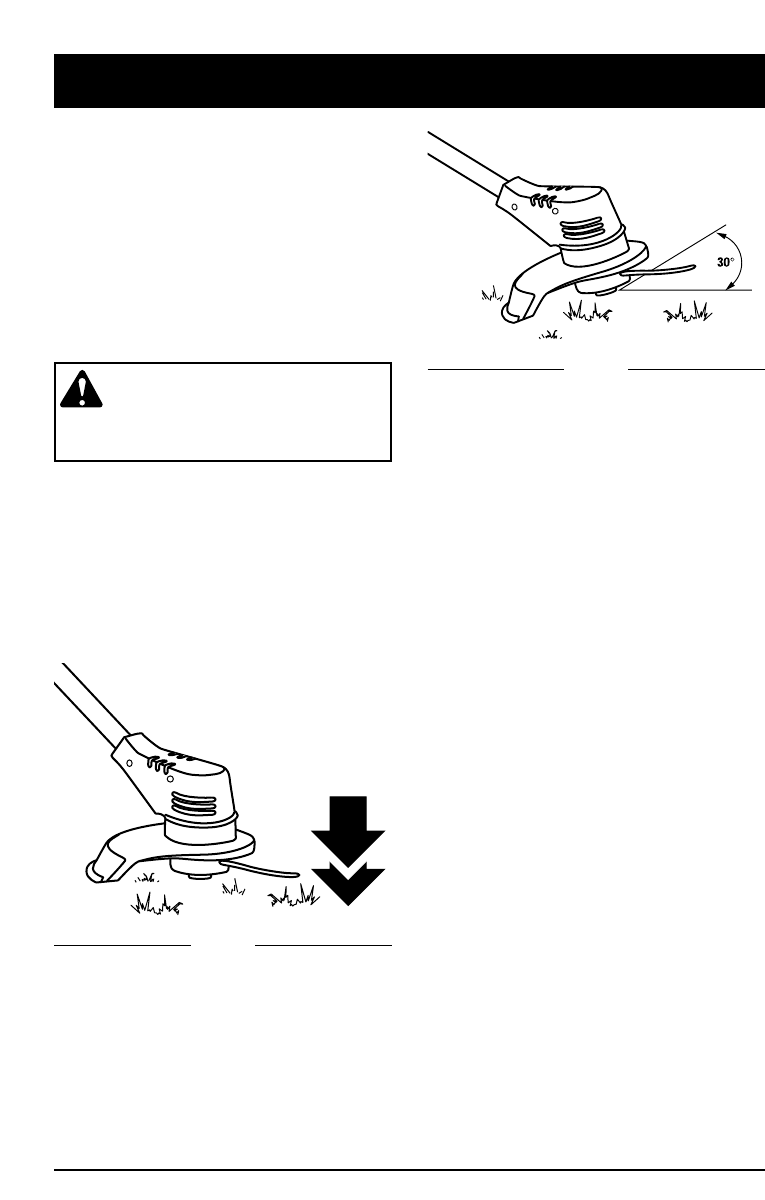
OPERATING INSTRUCTIONS
10
TO ADJUST TRIMMING LINE LENGTH
Your trimmer is equipped with a bump head,
which allows the operator to release more
trimming line without stopping the motor. As
the line becomes frayed or worn, additional
line can be released by lightly tapping the
trimming head on the ground (Fig. 10) while
operating the trimmer.
NOTE: Always keep the trimming line fully
extended. Line release becomes
more difficult as cutting line
becomes shorter.
WARNING: Do not remove or alter
the line cutting blade assembly.
Excessive line length will cause the
motor to overheat and may result in
serious personal injury.
Each time the head is bumped, approximately
1 inch (25.4 mm) of trimming line is released.
A blade in the string guard will cut the line if
excess line is released.
For best results, tap the head on bare ground or
hard soil. If line release is attempted in tall grass,
the motor may overheat. Always keep the
trimming line fully extended. Line release
becomes more difficult as the cutting line
becomes shorter.
DECORATIVE TRIMMING
Decorative trimming is accomplished by
removing all vegetation around trees, posts,
fences, etc. Use a 30-degree angle when
trimming with this method (Fig. 11).
Fig. 10
Fig. 11
TIPS FOR BEST TRIMMING RESULTS
1. The correct angle for the cutting attachment
is parallel to the ground.
NOTE: Do not rest the bump head on
the ground.
2. DO NOT FORCE THE UNIT. Allow the very
tip of the line to do the cutting (especially
along walls). Cutting with more than the
tip will reduce cutting efficiency and may
overload the motor.
3. Grass over 200 mm (8 in.) should be cut by
working from top to the bottom in small
increments to avoid premature line wear or
motor drag.
4. Whenever possible, cut right to left. When
cutting to the left, the unit's cutting efficiency
is improved slightly. Also, the clippings are
thrown away from the operator.
5. Slowly move the trimmer into and out of the
area being cut, maintaining the trimmer at
the desired cutting height. This can be either
a forward-backward or side-to-side motion.
Cutting shorter lengths produces best
results.
6. Trim only when grass and weeds are dry.
7. The life of your cutting line is dependent
upon following the previous trimming
techniques, what is being cut, and where
the cutting is being done. For example, the
line will wear faster when trimming against
a foundation wall as opposed to trimming
around a tree. Some line breakage will
occur from:
• Entanglement with foreign matter.
• Normal line fatigue.
• Attempting to cut thick, stalky weeds.
• Forcing the line into objects such as walls or
fenceposts.


















